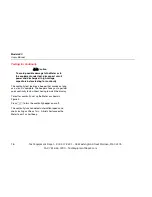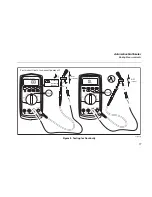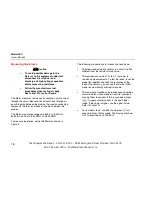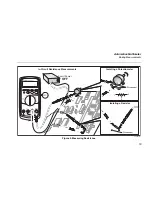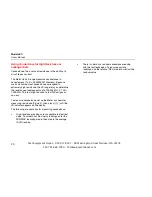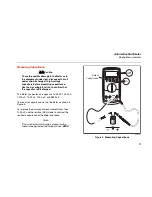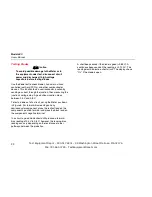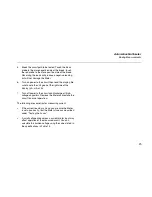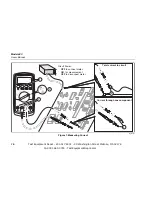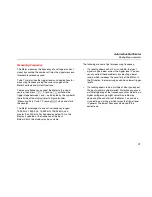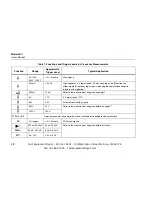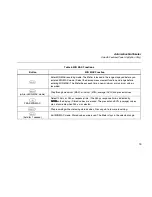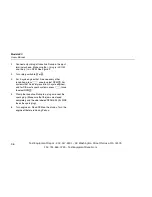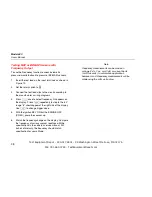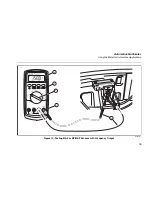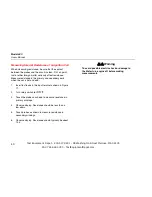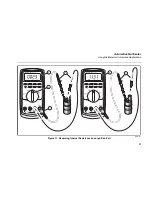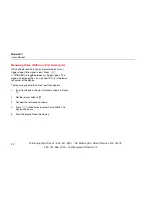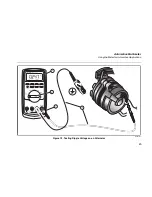
Model 88 V
Users Manual
30
Measuring Pulse Width
For a periodic waveform (its pattern repeats at equal time
intervals), you can determine the amount of time that the
signal is high or low as follows:
1.
Measure the signal's frequency by pressing
G
once.
2.
Press
G
two more times to measure pulse width
in milliseconds (ms)
3.
Press
E
to toggle between the signal’s positive or
negative pulse.
Bar Graph
The analog bar graph functions like the needle on an
analog meter, but without the overshoot. The bar graph
updates 40 times per second. Because the graph responds
10 times faster than the digital display, it is useful for
observing momentary changes, for making peak and null
adjustments and for observing rapidly changing inputs. The
graph is not shown for capacitance, frequency counter
functions, temperature, or peak min max.
The number of lit segments indicates the measured value
and is relative to the full-scale value of the selected range.
In the 60 V range, for example, the major divisions on the
scale represent 0, 15, 30, 45, and 60 V. An input of -30 V
lights the negative sign and the segments up to the middle
of the scale.
The bar graph also has a zoom function, as described
under "Zoom Mode".
Zoom Mode (Power Up Option Only)
To use the Rel Zoom Bar Graph:
1.
Hold down
F
while turning the Meter on. The
display reads
“
2rEL
”
.
2.
Select the relative mode by pressing
F
again.
3.
The center of the bar graph now represents zero and
the sensitivity of the bar graph increases by a factor of
10. Measured values more negative than the stored
reference activate segments to the left of center;
values more positive activate segments to the right of
center.
Uses for the Zoom Mode
The relative mode, combined with the increased sensitivity
of the bar graph's zoom mode, helps you make fast and
accurate zero and peak adjustments.
Test Equipment Depot - 800.517.8431 - 99 Washington Street Melrose, MA 02176
FAX 781.665.0780 - TestEquipmentDepot.com

